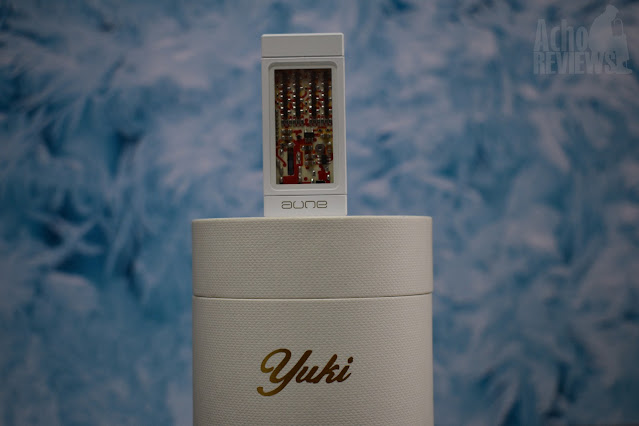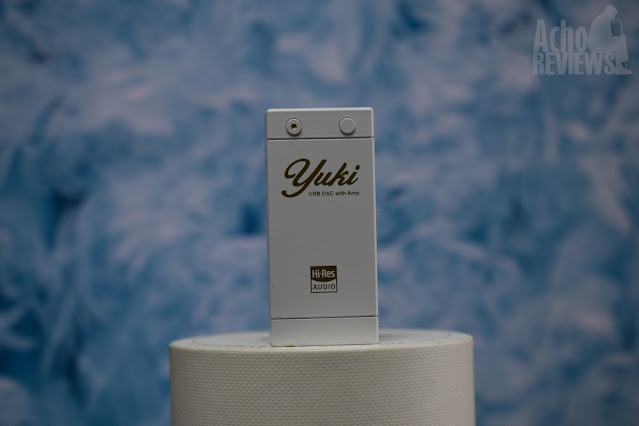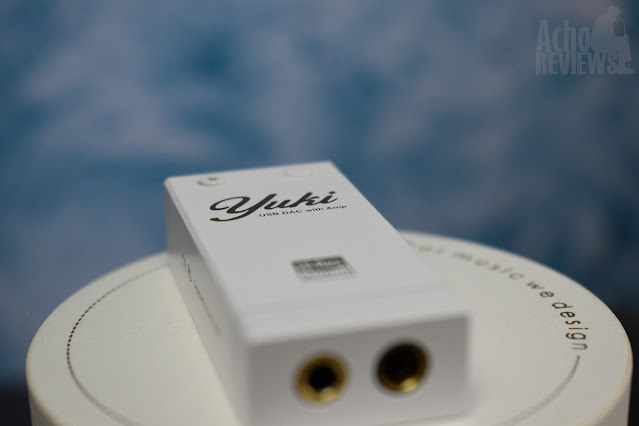Aune Yuki
TLDR version on YouTube: TDLR - Aune Yuki
The Aune Yuki has been sent to me directly by Aune for me to try it out and share my opinions in this review. Aune have not made any requests and I will do my usual best to be as unbiased as possible in my review.
You can find the official page for the Yuki here: https://www.aune-store.com/en/aune-yuki-dongle-dac_110207_1236/
Also available on Amazon US here: https://www.amazon.com/Portable-Headphone-Smartphone-Earphones-Headphones/dp/B0CJXYNNTH
As always, the above are non-affiliate links.
Intro…
The Yuki is, I believe, the first dongle from the Aune and I have to say that they certainly went all in on this. It is not the cheapest of dongles but it is far from being the most expensive, coming in at 169€ on the official Aune store here in Europe (at the time of puting together this review).
The device features dual CS43198 DAC chips which have been used in decent performing desktop solutions before and Aune seem to have done a good job implementing them in this device.
In fact, Aune seem to have done a good job in general with this device, seemingly spending time and effort on everything involved, but before I get ahead of myself, let’s go through the usual process and start off with the presentation.
Presentation…
Starting off with the packaging, we already see that Aune has aimed to be different. Rather than a box we get a circular tub which is white with the Aune logo in gold on the top, together with “for music we design”, along with Yuki in gold on the side. This has a dark blue card ring around it that shows some artwork and “Yuki” in white letters.
Removing the top reveals a small circular card with two QR codes, one to download the user manual PDF in Chinese and the other in English. Obviously I didn’t do this as a first step (why break tradition?) but looking at it I have to say that, for such a simple device, the user manual is complete and well written.
Under this top card we find the dongle sitting vertically in one section, with the USB-C to USB-C cable, along with a USB-A to USB-C adapter, sitting in another vertical section. There is plenty of foam surrounding them, of the high density type in white, meaning that the device is more than protected for shipping. On top of this, it was packaged in a brown cardboard box surrounding the tub, protecting it even more.
Although there is really not a lot to get excited about with the packaging, I have to say that I really like it when companies go that extra step and do something original. Here Aune have made something different without the need for additional materials other than simple card and foam.
Build and aesthetics…
The first impression of the device is that it looks beautiful. Of course beauty is in the eye of the beholder but, again, Aune have done something different that sets the device apart from the masses of dongles out there.
The clear top is obviously the first thing to catch the eye, which allows you to see the internals of the device. This is not something new, as one of my favourite dongles (the M15) already has this, however, other than the shape and the clear top, that is where the similarities end.
Aune have opted for a bright white finish to the Yuki, with gold lettering without it being overdone. I find there is a fine line between gold on white being elegant or blingy, with Aune seeming to manage to keep it in the first category. I have always said that I am not a fan of gold but the lettering is discrete and looks good on the white base.
The PCB inside the device, which is visible through the top window, is also a break from the usual green PCB. In this case, the board is red and creme, which, in my opinion, adds even more to the modern yet elegant look of the device.
On the back we get the Yuki logo in gold, with the two buttons above it featuring a single gold dot on one of them to differentiate it. This dot is also recessed so it can be identified, to some extent, by touch.
The included USB cable matches the device in colour, as does the adapter, and the cable is a very nice white braid. Once again, this just gives the sensation of them putting thought and effort into each little component.
In general, I have to praise the Yuki as I think that it is built well, with an aluminium body, and looks different to all the other dongles out there, without being too “off the wall”.
Functionality…
There is not a lot going on with the Yuki, so there is not much to discuss in the functionality side of things, however it does feature volume control and gain levels.
On the bottom of the device there is a 3.5mm unbalanced headphone output, together with a 4.4mm balanced output. At the top we get a single USB-C connector for power and data. That is it as far as connectivity is concerned.
As far as controls, we get the two buttons located on the back of the device. I have to say that I find the location of the buttons to be a strange choice. Once again they have done something different, which I applaud, but in this case I can’t help feeling that it is form over function. I find the buttons to be more difficult to access than if they were on the front or side but it is not the end of the world and I did get used to them pretty quickly.
The buttons are used to control the volume and gain level of the device. Pressing either of the buttons independently will raise or lower the volume, while pressing both of them simultaneously for 2 seconds will change the gain level.
The volume of the Yuki is independent to the device, meaning that the amplification in controlled on the Yuki and that there is no control of the device volume from the dongle. It has a nice small increment with each press and I really find it to work well (once you get used to the buttons on the back).
As far as devices, I have used it with a selection of Android and Windows devices (Win10) and have experienced absolutely no issues with any of them. It has always connected very fast and just worked without hiccup. I’m afraid I don’t have any iOS devices.
Sound…
Now, if I have praised Aune so far in the review for doing something different, in the sound section they have done something different by not doing anything different. Let me explain…
The majority of the Aune devices that I have tested in the past, those that I have reviewed and those that I haven’t, all managed to offer a clean and neutral sound without becoming sterile or cold. In the case of the Yuki they have done the same.
While there are portable devices that I enjoy because they have a little warmth to them, I have to say that I really enjoy the Yuki because of its neutrality. It manages to give you a very transparent sound that does not lose its musicality, something that is not always the case with many portable devices (or even desktop devices).
It may not be the most powerful dongle out there, I wouldn’t really suggest it for difficult to drive headphones, yet it does a very good job with over ears that are easy to drive. For example, although I didn’t really mention it in my review, it works very well with the AR5000 headphones from Aune.
However, my main use case has been with IEMs, both those that I have currently awaiting review and those that I usually grab when I get a chance, and it has been a very pleasurable experience.
From things that are more detail focused, such as the Quintet, through to more warmer options, such as the IE600, I feel that it pairs remarkably well. With the Hifiman Svanar, which is a set that I enjoy a lot but find that it does perform very differently on different sources, it is one of my preferred portable pairings so far. The Svanar maintains that warmth that it is natural to it while presenting the details that it is capable of, without seemingly any additional flavouring from the dongle.
The sound signature of the Yuki does remind me a lot of the S9c Pro that I reviewed from Aune not too long ago, which is a large desktop device. Of course it is not as powerful but the presentation is very similar, which is in turn very similar to my desktop set up of choice for general listening.
Honestly, I can’t find anything to complain about with the sound signature of the Yuki, it is another Aune device that I just enjoy listening to, or rather, not listening to, as it lets the music and the transducers do the work.
Conclusion…
The Aune Yuki has easily become one of my favourite dongle style devices. I have kept it with me almost all the time and have enjoyed using it with IEMs each time I have had a chance. Yes, there are times when I feel like a smoother more relaxed sound, which is the same sort of mood that I am in when I choose a tube amp for home listening, but for 90% of my listening time, I just can’t fault the device.
As I said at the beginning, it is certainly not the cheapest dongle out there but it is far from being the most expensive and I really came away with the feeling that the money spent on this device gives you something that has had a lot of thought and work put into it.
Honestly, I feel that the AR5000 and the Aune Yuki may be the 2 products from Aune that I have enjoyed the most to date. I do not mean that they are the best devices that Aune makes, they make some seriously good stuff, but they are products that make you feel like you are getting something special.
_
As usual, this review is also available in Spanish, both on my blog (www.achoreviews.com) and on YouTube (www.youtube.com/achoreviews)






